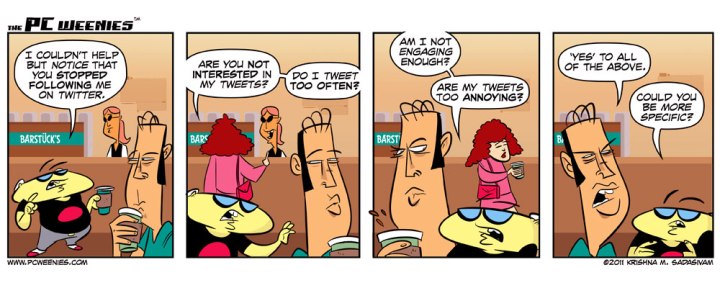
Blogging and tweeting have become a staple of technology in communication much as stone cutting/carving told stories or highlighted current (at the time) political movers and shakers. The act of blogging and tweeting is not only a way of telling stories and having conversations but have become a tool for businesses to tell their story, have conversations with their customers, turn bad situations to better and sustain loyalty in their customer base, increasing and broadening that base. But all this is not as simple as writing a story or tactful advertising content; There are best practices for both and there may be some differences depending on the industry or company that is being blogged or tweeted about by consumers or the companies themselves.

Would you pay $57.3 million for this? (credit Kena Betancur- Getty Images).
The auction and antique industry have their own unique traditions and idiosyncrasies that really test those best practices. A lot of information is held close-to-the-chest making these two sharing venues less than flowing with information. It’s not like trade secrets are in jeopardy, its value vs price that are vulnerable, and some participants (the serious collectors) are not averse to bringing a gun to a knife fight so to speak, to get what they want. So how does this industry stack-up in the best practices arena, let’s find out.
Best Practices

Blogs
Of late much has been written about blogs; how to write them, what the content should be, how to use them for business, or as a business, and all through this what are the best practices to better insure your blog will be heard. I found that many academics have the same idea of what those best practices should be so I chose one prominent person in that group, Dorie Clark. She co-authored an article about blogging with Jacqueline Gilbert and Donald Roy. In the article she named her five best practices; 1) High frequency, 2) Reader interaction, 3) A clear niche, 4) Hard information, and 5) A distinctive voice.
Let’s take these one at a time to be sure we understand the concepts; remember we are trying to sell the Colosseum sort of an ancient real estate firm. First our blog would be daily and fresh. Second, remember this is a two-way street now, if all we are doing is pushing we will get nowhere and the Colosseum will be on sale for another 2,000 years. Third, we have to have a clear niche. What the heck does that mean? It is the same as setting a marketing strategy, before you can determine a strategy you need to know your target demographic. Here the niche is a topic you believe your audience will have interest in, and you can become an expert of sorts to attract followers/customers. Fourth, be specific about the topic; offer something useful to the conversation not just rambling. Finally fifth on the list, be human write naturally. It’s a blog not a Sistine Chapel, if you’re in doubt press publish (a paraphrase of a Twitter phrase). An example of a good blog in an auction setting is Heritage Auctions. An example of their blog, which is frequent, fresh, informative, has their niche (the auction information), and is in a relaxed tone can be found here.
Best practices

Just as blogs, Twitter also has best practices that should guide you or a company to be a successful tweeter unlike our friend here

Twitter gurus list different best practices; Courtney Shelton Hunt of Denovati Digital has 11 tips, Business topic of Twitter lists five. Never being the one to take a shortcut; my father used to say that if you have a full tank of gas you’re not lost, I have decided to go with the 11 item list by Hunt. The reason is that although the Twitter list has some of the same information, the Hunt list is more specific in its content. However for the sake of brevity I will just list, for more detail, although I think these tips are mostly self-explanatory, see here. These best “tips” are: 1) Quality over quantity, 2) Craft your tweets well, 3) Use hashtags wisely, 4) Think about multiple views, 5) Don’t tweet drivel, 6) Find the tweets-per-day sweet spot, 7) Don’t overdo it, 8) Time your tweets well, 9) Plan your tweets, 10) Live tweet judiciously, 11) Don’t have private chats in public spaces. Some of these may be cross-overs to blogs and because they are both content sharing venues this seems appropriate.
In Practice
This is all very interesting but is either blogging or tweeting useful for a ragtag industry like auctions and antiques. For the large houses like Christie’s and Sotheby’s the value is obvious but are smaller venues making use of these tools? Marius Bulearca and Suzana Bulearca penned an article investigating Twitter as a viable tool for SMEs (Small to Medium-sized Enterprises). Although the study was not definitive, by the authors own admission, they were able to conclude that Twitter was more suitable for business networking than other platforms, like Facebook.
Blogging is what it is as Gilbert, Clark, and Roy stated in their previously referenced article, a low cost, potentially high-impact and visible way to become a valuable member of a community and to elevate one’s brand. In my opinion it is just as useful as Twitter but it is self-moderating who sees it, just those interested in a specific topic. For example how many people want to read about time travel induced by antiques.
In the end blogs and tweets are themselves a best practice for any business big or small. The auction and antique industry is no different. Just for curiosity sake scan these examples of auction houses and see how they use blogs and tweets to get their message out; additionally notice that not all auction houses are about antiques but they are still in that family of selling and buying. These are just three of literally thousands; Mike Brandly, Thorn Hill Auction, and the Iron Planet. If your curiosity was piqued, go to any auction; get that feely, touchy experience you can’t get on e-Bay or any other online auction. Trust me.